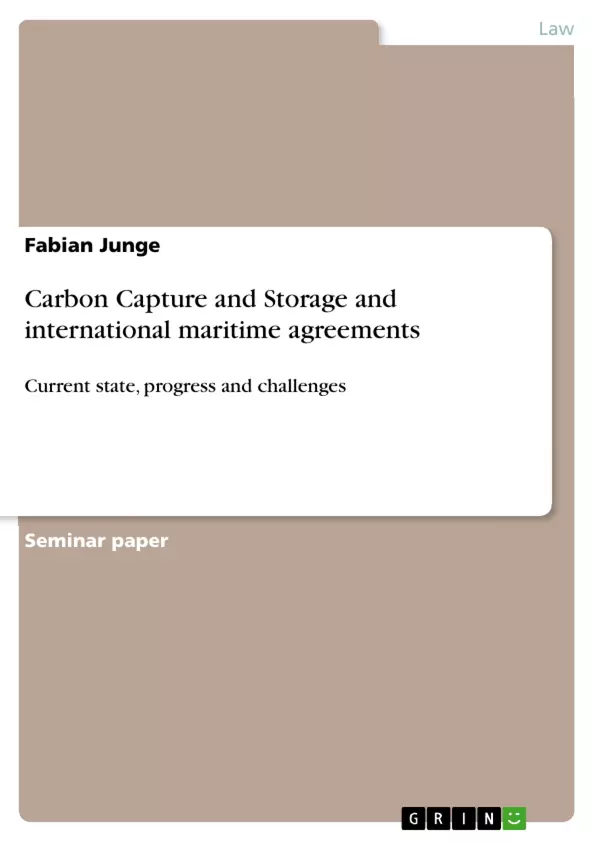Climate change is undisputable one of the most important and most discussed topics in the 21st century so far. The Intergovernmental Panel on Climate Change observed in his “Fourth Assessment Report on Climate Change” in 2007 that within the period of 1906 to 2005 the climate changed significantly. Global warming, increasing precipitation and a sea-level rise are just some indicators supporting the findings. One of the major causes leading to climate change is the increasing carbon dioxide concentration in the air mainly due to the use of fossil fuels.
The International Energy Agency outlined that with the lack of new energy sources or at least changed energy policies, the energy-related CO2 emissions in 2050 will be twice the level of 2007. Therefore, politicians and scientists all over the world are making a huge effort to develop and provide measures for reducing the emissions of CO2 and other global warming gases. Besides the more famous accomplishments such as the subsidization of renewable energy sources or emission trading a new technology emerged in the past decade, Carbon Capture and Storage (CCS).
It can be described, in general, as a technique to reduce CO2 emissions into the atmosphere by sequestrating it from fossil fuels and storing it into geological formations in the ground or in the sub-seabed. In chapter “B” this paper will give an overview about the technological concept of CCS and the various approaches that are currently examined by scientists.
CCS is seen as one of the most feasible climate change mitigation options due to its capability to reduce the emission of CO2 into the atmosphere without abandoning the use of fossil fuels. To do justice to this rating, it is necessary to support the deployment of CCS by developing and constructing legal frameworks and regulations that are flexible enough to allow for new technological advancements. The European Union is taking a big step forward with its Directive 2009/31/EC of the European Parliament and of the Council by creating a regulatory framework for the geological storage of CO2.
Inhaltsverzeichnis (Table of Contents)
- A. Introduction
- B. Technical Basics of CCS
- I. Capture
- II. Transportation
- III. Storage
- C. International maritime waste agreements
- I. The 1982 UNCLOS
- II. The 1972 London Convention
- III. The 1996 London Protocol
- IV. The 1992 OSPAR Convention
- D. Conclusion
Zielsetzung und Themenschwerpunkte (Objectives and Key Themes)
This term paper explores the current state, progress, and challenges of Carbon Capture and Storage (CCS) technologies and their intersection with international maritime agreements. It analyzes the technical basics of CCS, highlighting capture, transportation, and storage processes. The paper then delves into the international legal framework governing maritime waste disposal, examining key agreements such as the UNCLOS, the London Convention, the London Protocol, and the OSPAR Convention.
- The technical intricacies of CCS technologies and their potential for mitigating greenhouse gas emissions
- The legal and regulatory frameworks governing international maritime waste disposal
- The compatibility of CCS technologies with existing international maritime agreements
- The challenges and opportunities associated with the implementation of CCS at a global scale
- The role of international cooperation in promoting the development and deployment of CCS technologies
Zusammenfassung der Kapitel (Chapter Summaries)
The introduction provides an overview of CCS technologies and their significance in the context of climate change mitigation. It highlights the potential benefits of CCS, as well as the challenges and uncertainties associated with its implementation. The technical basics of CCS are explained in detail, covering capture, transportation, and storage processes.
The paper then delves into the international legal framework governing maritime waste disposal, examining key agreements such as the UNCLOS, the London Convention, the London Protocol, and the OSPAR Convention. These agreements establish rules and regulations for the disposal of wastes at sea, including potential risks associated with the storage of CO2 in the marine environment.
Schlüsselwörter (Keywords)
The paper explores the key concepts of Carbon Capture and Storage (CCS), international maritime agreements, greenhouse gas emissions, climate change mitigation, and marine environmental protection. It analyzes the compatibility of CCS technologies with existing international legal frameworks, focusing on the UNCLOS, the London Convention, the London Protocol, and the OSPAR Convention. The paper also examines the challenges and opportunities associated with the deployment of CCS technologies on a global scale.
- Citation du texte
- Fabian Junge (Auteur), 2011, Carbon Capture and Storage and international maritime agreements, Munich, GRIN Verlag, https://www.grin.com/document/183904



